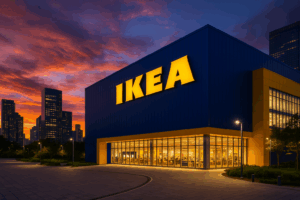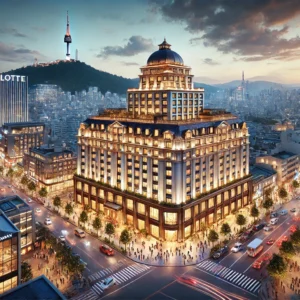IKEA’s Strategic Expansion: IKEA’s Urban Pivot in Asia
IKEA, the globally recognized Swedish home furnishings powerhouse, is transforming its approach to Asian markets by placing South Korea at the heart of its new strategy. As consumer preferences shift toward convenience, digital connectivity, and sustainability, IKEA has chosen Korea—a tech-savvy, design-forward society—as a critical testing ground for its next phase of growth. The opening of its first Seoul-based store in Gangdong in April 2025 marks a milestone that combines urban accessibility with a renewed retail experience.
This expansion isn’t just about adding another store—it represents a dramatic pivot from traditional suburban megastores to integrated, city-friendly locations with a focus on mixed-use development and omnichannel infrastructure. For global readers and business watchers, South Korea is fast becoming one of IKEA’s most dynamic testbeds for innovation.
IKEA Gangdong: A Mixed-Use Milestone in City Retail
The IKEA Gangdong store is uniquely situated within the bustling Gangdong I-Park The River complex, a lifestyle hub that blends residential, commercial, and recreational space. Spanning two levels, the store offers an impressive 7,400 products, with approximately 3,700 items readily available for purchase on-site. This model stands in contrast to IKEA’s traditional big-box suburban stores, showing the brand’s intention to be part of consumers’ daily lives in urban centers.
What makes Gangdong particularly notable is its alignment with modern lifestyle values:
- A Circular Hub for upcycling and repair services, helping reduce consumer waste
- A sustainable living section with green lifestyle tips and eco-conscious products
- EV-based home delivery and geothermal-powered heating and cooling systems
The city-center approach is a clear response to Seoul’s high-density living and growing demand for environmental responsibility. Shoppers can now enjoy IKEA’s immersive showroom and services without making long suburban trips.
Massive Investment and a Sharpened Strategic Focus
To reinforce its long-term vision in South Korea, IKEA has pledged more than €300 million (US $341 million) in investments through 2026. This funding is being allocated across multiple fronts:
- Launching additional urban stores in cities like Daegu, Daejeon, and potentially Busan
- Strengthening supply chain and e-commerce logistics through localized fulfillment centers
- Lowering prices via efficient inventory management and local sourcing of key items
In a bold strategic pivot, IKEA has halted the development of a previously planned $38 million logistics hub in Pyeongtaek. Instead, the company is adopting a leaner, more flexible distribution model aimed at reducing delivery times and adapting to Korea’s fast-changing consumer landscape.
Seamless Integration: A True Omnichannel Retail Experience
South Korea’s highly connected population expects convenience at every touchpoint, and IKEA Korea is delivering on that expectation. The company’s retail strategy combines the tactile value of in-store browsing with the speed and customization of digital shopping. Key features include:
- Click-and-collect services that allow same-day pickups from local hubs
- In-store QR codes that sync with the mobile app for easy reordering and comparison
- Targeted digital campaigns offering region-specific discounts and delivery offers
This hybrid approach ensures IKEA maintains relevance among digitally native Korean shoppers and creates a customer journey that bridges online discovery with offline fulfillment.
Sustainability as a Core Business Principle
IKEA’s Gangdong store is more than just another retail location—it’s a statement of the brand’s environmental ethos. Sustainability is embedded into every facet of operations:
- Utilization of geothermal energy and solar power for in-store electricity and climate control
- Eco-packaging and waste reduction systems throughout the logistics chain
- Promotion of circular consumption through trade-in programs and reusable materials
These green initiatives not only reduce operational emissions but also speak directly to Korea’s environmentally aware younger generations, many of whom are passionate about climate issues and sustainable living.
Competitive Edge Through Affordability and Localization
Faced with competition from domestic platforms like Coupang and interior design communities like O!House, IKEA has localized its offerings to better appeal to Korean shoppers. Its ₩10.5 billion (≈US $7.6 million) price reduction campaign on over 1,200 items demonstrates a deep commitment to affordability. IKEA also continuously monitors consumer behavior to update its product line with trending local styles, compact furniture for small apartments, and quick-assembly options tailored to Korean homes.
Moreover, pop-up stores and mobile showrooms have been deployed to capture interest in areas without physical stores, giving consumers a taste of IKEA’s design philosophy even outside major cities. This nimble approach ensures broad brand visibility and accessibility, crucial in a country known for its fast-changing retail environment.
Conclusion: IKEA Korea as a Global Blueprint for Urban Retail
What IKEA is doing in South Korea represents more than regional growth—it offers a blueprint for how legacy retailers can adapt to the demands of modern, urbanized societies. The integration of sustainable practices, investment in omnichannel platforms, and emphasis on hyper-localized pricing and services form a cohesive strategy that can be mirrored in other fast-growing cities worldwide.
As global cities continue to densify and consumers prioritize convenience, affordability, and eco-consciousness, IKEA’s Korea expansion offers valuable lessons for businesses navigating this evolving landscape.











